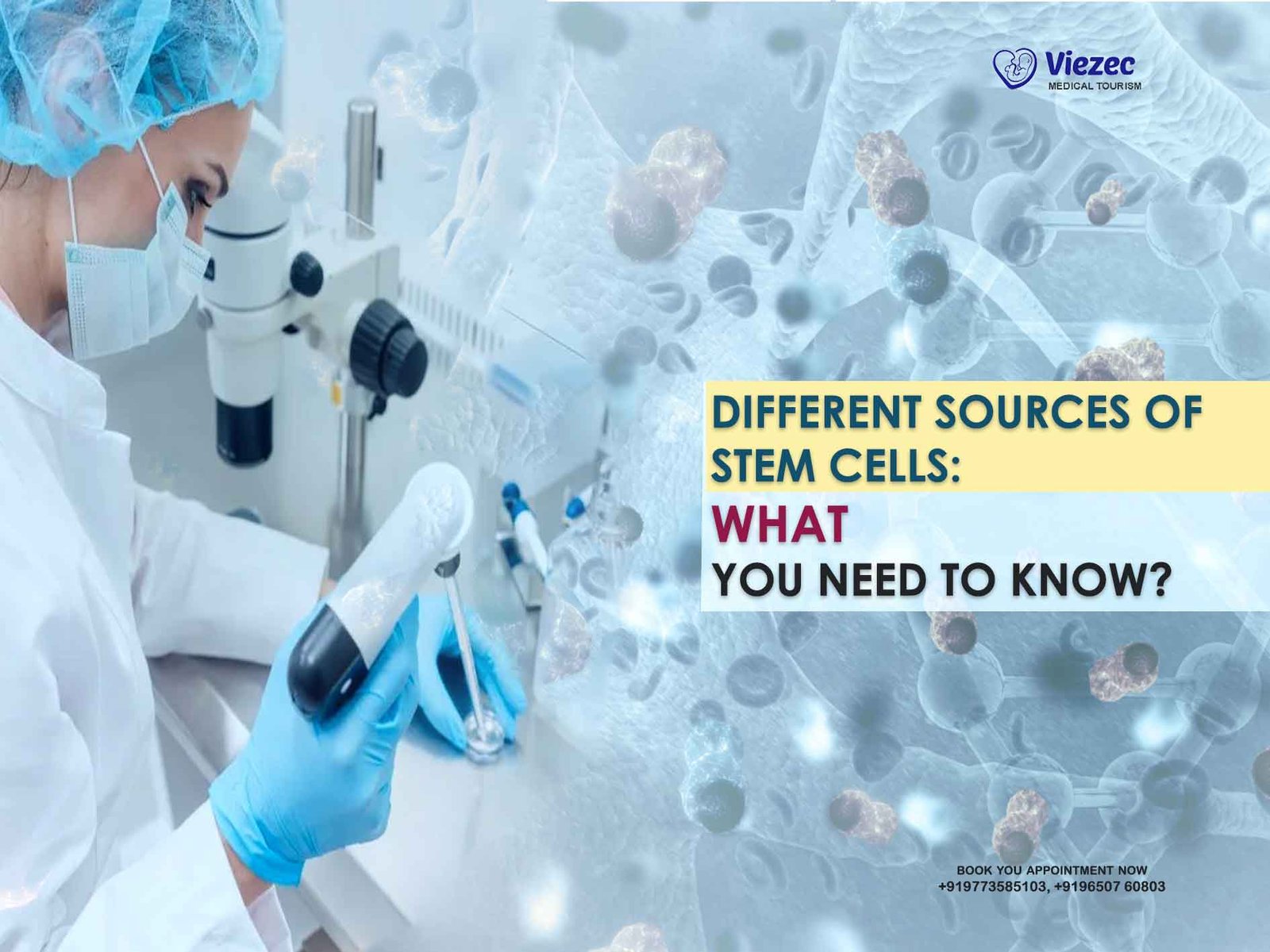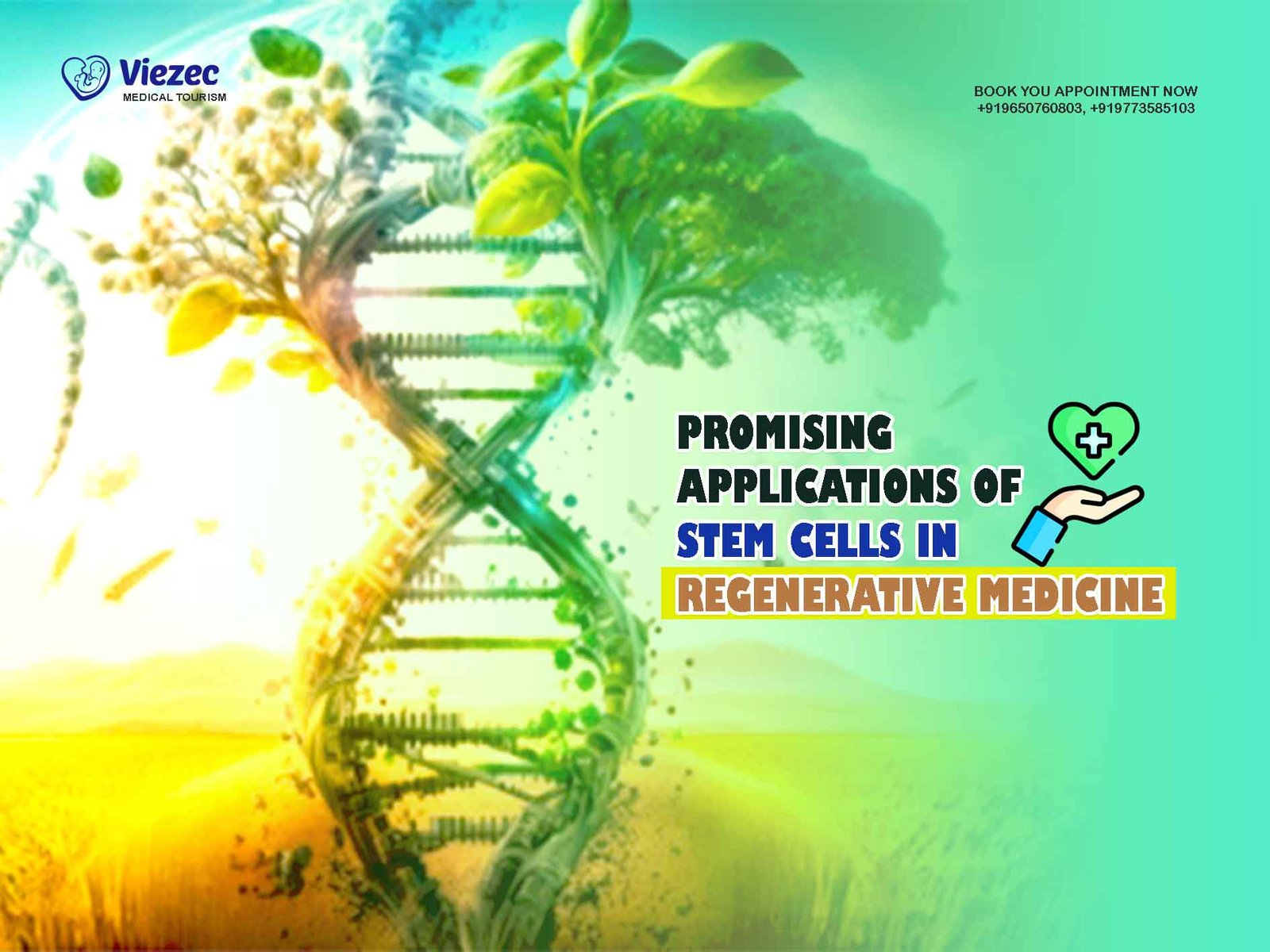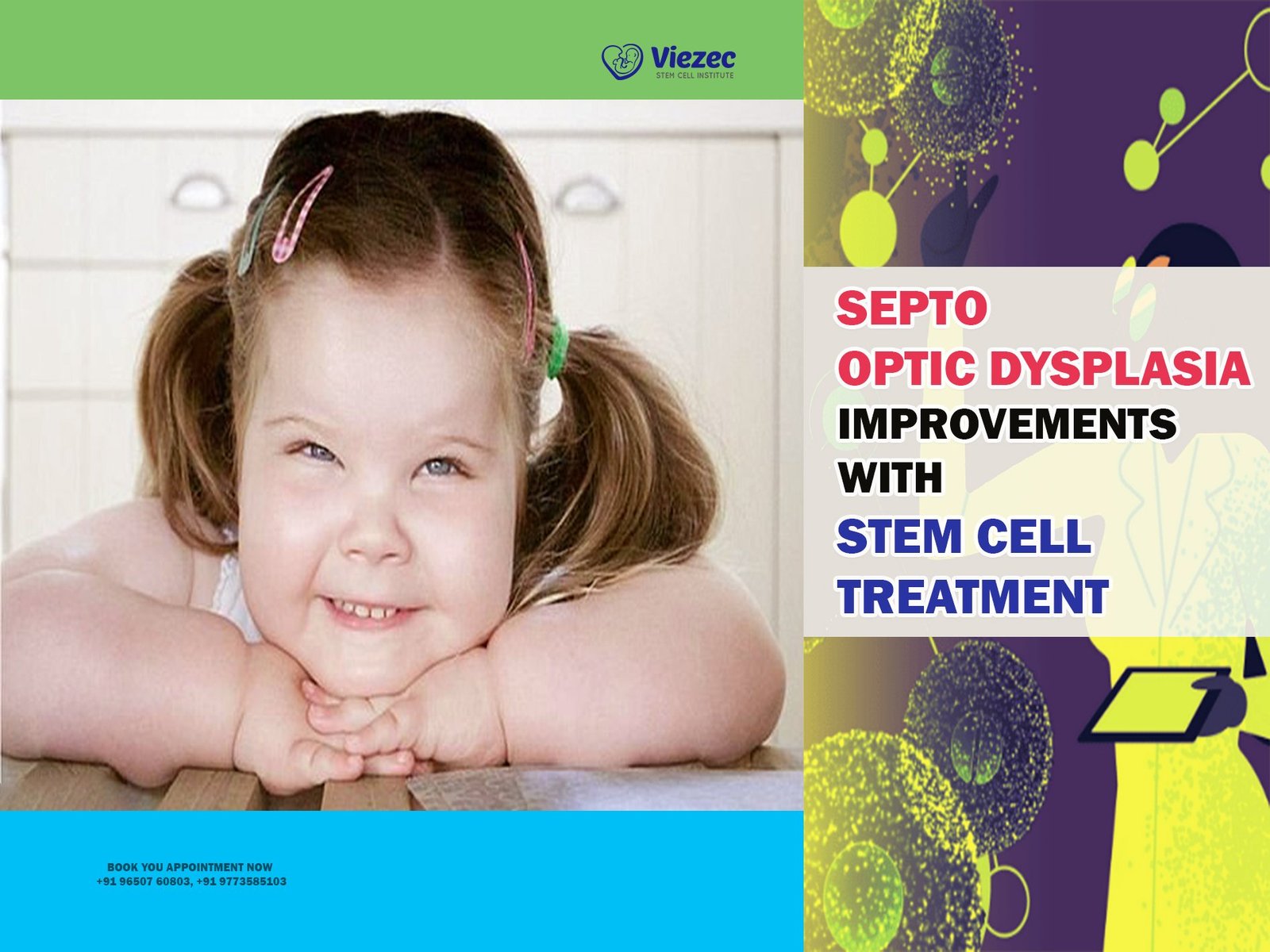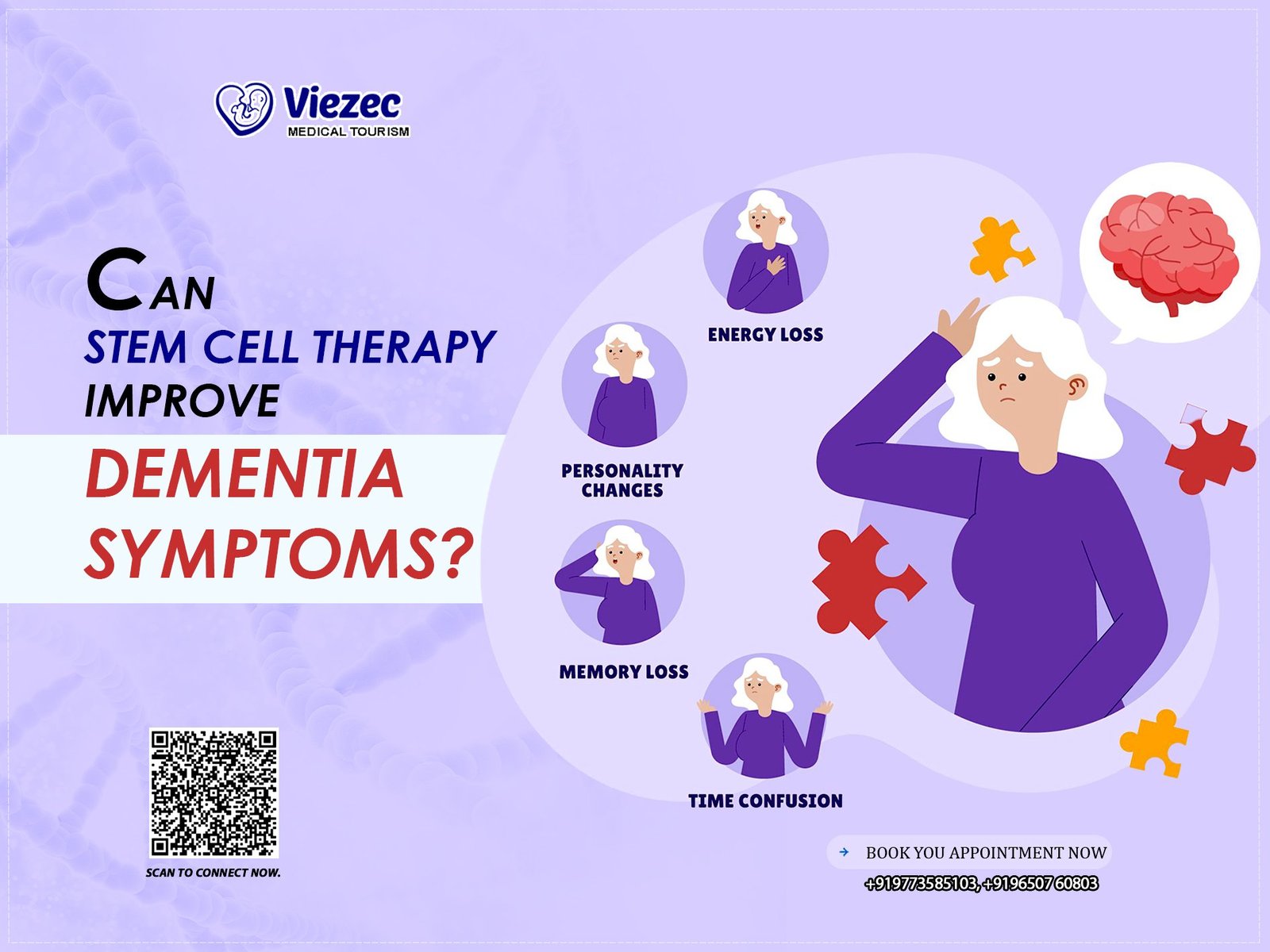Stem cells have revolutionized the field of regenerative medicine, offering hope for treating a myriad of diseases and injuries. These unique cells possess the remarkable ability to differentiate into various specialized cell types, making them invaluable for repairing damaged tissues and organs. Understanding the different sources of stem cells is crucial for unlocking their full potential in medical applications.
Defining Stem Cells
Stem cells are undifferentiated cells with the capacity to self-renew and differentiate into specialized cell types. They play a vital role in embryonic development, tissue repair, and homeostasis within the adult body. Stem cells are characterized by their ability to give rise to a diverse range of cell lineages, making them invaluable for regenerative medicine.
Importance in Regenerative Medicine
The use of stem cells in regenerative medicine holds immense promise for treating a wide range of conditions, including neurodegenerative diseases, cardiovascular disorders, and musculoskeletal injuries. By harnessing the regenerative potential of stem cells, researchers aim to develop innovative therapies that can restore tissue function and improve patient outcomes.
Embryonic Stem Cells (ESCs)
Origins and Characteristics
Embryonic stem cells are derived from the inner cell mass of blastocysts, which are early-stage embryos. These pluripotent cells have the capacity to differentiate into any cell type in the body, making them highly versatile for research and therapeutic applications.
Ethical Considerations
The use of embryonic stem cells has been a subject of ethical debate due to the destruction of human embryos during their extraction. This ethical dilemma has prompted researchers to explore alternative sources of stem cells that do not raise similar ethical concerns.
Potential Applications and Research
Despite ethical considerations, embryonic stem cells remain a valuable tool for studying early development and disease modeling. Their ability to differentiate into any cell type makes them particularly useful for understanding the underlying mechanisms of various disorders and screening potential therapeutics.
Adult Stem Cells (ASCs)
Types and Sources
Adult stem cells are found in various tissues throughout the body, including bone marrow, adipose tissue, and the brain. Unlike embryonic stem cells, adult stem cells are multipotent, meaning they can differentiate into a limited range of cell types specific to their tissue of origin.
Function and Role in the Body
Adult stem cells play a crucial role in tissue maintenance and repair, serving as a built-in repair system for damaged or aging tissues. They contribute to the body’s natural healing processes and are essential for maintaining tissue homeostasis throughout life.
Therapeutic Uses and Limitations
Adult stem cells have shown promise in regenerative medicine, particularly in treating conditions such as leukemia, spinal cord injury, and heart disease. However, their limited differentiation potential and reduced capacity for proliferation compared to embryonic stem cells present challenges for their widespread therapeutic application.
Induced Pluripotent Stem Cells (iPSCs)
Generation Process
Induced pluripotent stem cells are derived from adult somatic cells through reprogramming techniques that induce a pluripotent state. By introducing specific transcription factors, researchers can reset the cellular identity of adult cells, allowing them to regain the ability to differentiate into any cell type.
Properties and Similarities to ESCs
Induced pluripotent stem cells share many characteristics with embryonic stem cells, including pluripotency and the capacity for self-renewal. This makes them a valuable alternative to embryonic stem cells for research and therapeutic purposes, without the ethical concerns associated with embryo destruction.
Applications in Disease Modeling and Therapy
Induced pluripotent stem cells have revolutionized disease modeling and drug discovery by providing researchers with patient-specific cell lines for studying disease mechanisms and testing potential therapeutics. They also hold promise for personalized regenerative therapies tailored to individual patients.
Umbilical Cord Stem Cells (UCSCs)
Nature and Extraction
Umbilical cord stem cells are obtained from the umbilical cord and placenta following childbirth. These cells, which include hematopoietic stem cells and mesenchymal stem cells, exhibit properties similar to both embryonic and adult stem cells, making them valuable for medical applications.
Advantages Over Other Sources
Umbilical cord stem cells offer several advantages over other sources of stem cells, including their non-invasive collection process, high proliferative capacity, and immunomodulatory properties. They also have a lower risk of graft-versus-host disease compared to bone marrow-derived stem cells.
Clinical Applications and Research Progress
Umbilical cord stem cells have been successfully used in the treatment of various conditions, including blood disorders, immune deficiencies, and certain types of cancer. Ongoing research is exploring their potential in regenerative medicine, tissue engineering, and immunotherapy.
Amniotic Fluid Stem Cells (AFSCs)
Characteristics and Collection Methods
Amniotic fluid stem cells are derived from the amniotic fluid surrounding the developing fetus during pregnancy. These cells possess both embryonic and adult stem cell properties, exhibiting multilineage differentiation potential and immunomodulatory effects.
Potential Therapeutic Uses
Amniotic fluid stem cells hold promise for treating a wide range of conditions, including congenital anomalies, neurological disorders, and tissue injuries. Their ability to differentiate into various cell types and promote tissue regeneration makes them an attractive candidate for regenerative medicine.
Comparative Analysis with Other Sources
Compared to other sources of stem cells, such as embryonic and adult stem cells, amniotic fluid stem cells offer several advantages, including their non-invasive collection, abundant supply, and lower risk of tumorigenicity. These unique properties make them a valuable resource for clinical applications.
Dental Pulp Stem Cells (DPSCs)
Discovery and Properties
Dental pulp stem cells are isolated from the pulp tissue of teeth and exhibit multipotent differentiation potential. These cells have garnered significant interest in regenerative dentistry and tissue engineering due to their accessibility and ability to regenerate dental tissues.
Dental Tissue Engineering Applications
Dental pulp stem cells have been explored for various dental applications, including pulp regeneration, dentin repair, and periodontal tissue regeneration. Their ability to differentiate into odontoblasts, osteoblasts, and other dental cell types makes them a promising tool for restoring dental function and aesthetics.
Challenges and Future Directions
Despite their potential, dental pulp stem cells face challenges such as limited proliferation capacity and donor variability. Future research efforts aim to overcome these limitations through optimization of culture conditions, genetic engineering, and scaffold-based approaches for tissue engineering.
Menstrual Blood Stem Cells (MenSCs)
Identification and Isolation Techniques
Menstrual blood stem cells are derived from the menstrual fluid shed during menstruation and exhibit multilineage differentiation potential. These cells can be isolated using non-invasive methods, making them an attractive source of stem cells for regenerative medicine.
Therapeutic Potential in Regenerative Medicine
Menstrual blood stem cells have shown promise in treating various conditions, including spinal cord injury, heart disease, and autoimmune disorders. Their immunomodulatory properties and ability to differentiate into multiple cell types make them a versatile tool for tissue repair and regeneration.
Current Research Landscape
Ongoing research is focused on further elucidating the therapeutic potential of menstrual blood stem cells and optimizing strategies for their clinical application. Preclinical studies and clinical trials are underway to evaluate the safety and efficacy of these cells in various disease models and patient populations.
Challenges and Controversies in Stem Cell Research
Regulatory Issues and Oversight
Stem cell research is subject to stringent regulatory oversight to ensure ethical standards, patient safety, and scientific rigor. Regulatory frameworks vary between countries, with considerations for the source of stem cells, consent requirements, and oversight of clinical trials.
Clinical Trials and Safety Concerns
The translation of stem cell therapies from the laboratory to the clinic involves rigorous testing through preclinical studies and clinical trials. Safety concerns such as tumorigenicity, immune rejection, and off-target effects must be addressed to ensure the safety and efficacy of stem cell-based therapies.
Public Perception and Ethical Debates
Stem cell research continues to be a topic of public debate, with discussions surrounding ethical, religious, and philosophical considerations. Public perception and understanding of stem cell science influence funding, policy decisions, and societal acceptance of stem cell therapies.
Future Directions and Conclusion
Emerging Technologies and Innovations
Advances in stem cell biology, tissue engineering, and regenerative medicine are driving the development of innovative technologies and therapies. Emerging techniques such as gene editing, organoid culture, and biomaterials engineering hold promise for enhancing the efficacy and safety of stem cell-based treatments.
Integration of Stem Cell Therapies into Mainstream Medicine
As stem cell therapies continue to demonstrate clinical efficacy and safety, there is growing recognition of their potential to transform mainstream medicine. Integration of stem cell-based treatments into clinical practice requires collaboration between researchers, clinicians, regulators, and industry partners to ensure accessibility and affordability.
Final Thoughts on the Landscape of Stem Cell Research
The landscape of stem cell research is dynamic and evolving, with ongoing discoveries shaping the future of regenerative medicine. From embryonic and adult stem cells to novel sources such as umbilical cord and menstrual blood, the diverse array of stem cell types offers unprecedented opportunities for medical innovation and improving patient outcomes. As researchers continue to unravel the mysteries of stem cell biology and translate their findings into clinical applications, the potential for harnessing the regenerative power of stem cells to address unmet medical needs remains promising. By navigating ethical, regulatory, and scientific challenges, stem cell research holds the key to unlocking new treatments and therapies that have the potential to revolutionize healthcare in the 21st century.









